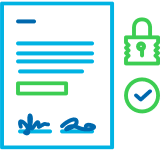Resources
Securing the Expanding Universe of Higher Ed Data with Spirion
As the data landscape evolves and regulatory expectations rise, higher education institutions can no longer afford reactive or siloed data protection strategies. With Spirion, they gain the tools to proactively manage data risk, protect personal information, and operate with confidence.
Spirion Helps Public Utility Gain Control and Confidence by Scaling Data Protection
A U.S. water utility was challenged with gaining visibility and control over sensitive data across internal systems. Spirion’s provided precise scanning and classification to gain a firm grasp on sensitive data protection and improve data security posture.
Resort Hospitality Chain Enjoys Data Security across Decentralized Environment with Spirion
A large hotel chain had sensitive information across a decentralized environment making it difficult to adhere to compliance regulations and keep sensitive information like credit card data safe. They chose Spirion to help. Find out why.
